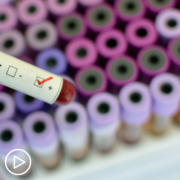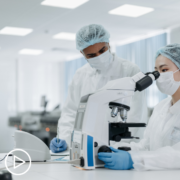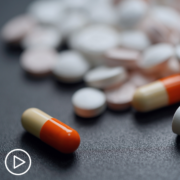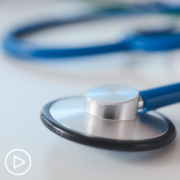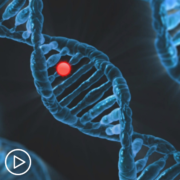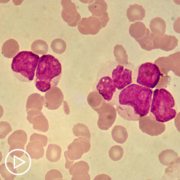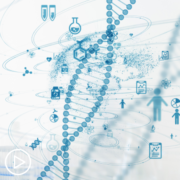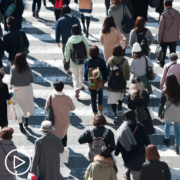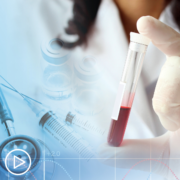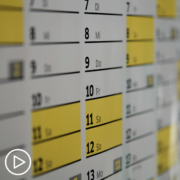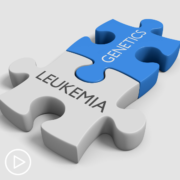What Are Current and Emerging AML Treatment Approaches? from Patient Empowerment Network on Vimeo.
AML Expert Dr. Eytan Stein provides an overview of current and emerging treatment approaches for people living with AML.
Dr. Eytan Stein is a hematologist oncologist at Memorial Sloan Kettering Cancer Center and serves as Director of the Program for Drug Development in Leukemia in Division of Hematologic Malignancies. Learn more about Dr. Stein, here.
See More from Thrive AML
Related Resources:
Transcript:
Katherine Banwell:
What are the treatment types available to AML patients? You mentioned chemotherapy. What else is there?
Dr. Eytan Stein:
Yeah, so if I was having this discussion with you, even when I first started my career back in 2013, all I would’ve been talking to you about was induction chemotherapy and maybe a lower-dose chemotherapy called hypomethylating agents.
I think one thing that really needs to be recognized is that the advances we’ve made for the treatment of acute myeloid leukemia, over the past 10 years, have been just remarkable. We’ve had a number up to nine drug approvals over the past 10 years, and those therapies fall into the following categories.
We now have therapies outside the strong induction consolidation we talked about. We have therapies such as targeted therapies that target specific gene mutations that are present in patients with acute myeloid leukemia. Those are often oral therapies that patients can take at home. And we have very effective therapies for older patients who usually can’t handle the side effects of induction chemotherapy. That’s the combination of a type of drug called a hypomethylating agent with a very, very powerful targeted drug called a BCL-2 inhibitor.
One of those drugs, that drug is called venetoclax. That’s the one that’s FDA-approved. And the combination of those hypomethylating agents and venetoclax, has really changed the paradigm for how we treat older patients with acute myeloid leukemia, led to many patients who have been able to live much longer than they would have before this therapy came about.
You know, there are other therapies that are in development, but I don’t know if we’ll end up talking about that a little bit later. But there are therapies such as immunotherapy, which has gotten a lot of press for other kinds of cancers, like one cancer called the rectal cancer, that aren’t yet approved for acute myeloid leukemia but are being developed for acute myeloid leukemia.
So, the future of acute – the current treatments for acute myeloid leukemia are dramatically better than they were 10 years ago, and I would anticipate that we’re going to continue to see these kind of advances over the next 10 years.
Katherine Banwell:
What about stem cell transplant? Who might be right for that? Who might be eligible?
Dr. Eytan Stein:
Yeah, so let’s go back to the discussion a little bit about consolidation chemotherapy. So, when you have a patient that gets induction chemotherapy or gets any therapy – it doesn’t have to be chemotherapy – to put their disease into remission, for a large group of patients, we think that the best way to cure their disease is to do something called a stem cell transplant.
So, what’s a stem cell transplant? What it is not is like a heart transplant or a liver transplant, which patients often don’t realize.
So, it’s not a procedure where an organ is being transplanted through a surgical procedure. What it is is it’s acknowledging that the cause of acute myeloid leukemia is that the most primitive cells in the bone marrow, called the stem cells, are the cause of the disease. And the chemotherapies that we give patients to get them into remission don’t always eradicate those bad stem cells.
So, what we’re able to do once a patient is in remission is we try to get them new stem cells. How do you get a patient new stem cells? Well, you go to a donor, and there’s a donor bank of people who have volunteered to donate stem cells to patients with acute myeloid leukemia. You go to the donor bank, and then you give chemotherapy to the patient to sort of wipe out their bad stem cells, and then you give them new stem cells that will hopefully permanently eradicate the disease.
What ends up happening is that a large group of patients with acute myeloid leukemia end up being referred for a stem cell transplant. The reason is twofold. You know, it used to be – I keep talking about the past. I’m getting older, and so now I can talk about the past.
Yeah. So, it used to be that stem cell transplants were really reserved to people less than 65 years old.
But our advances in our ability to do stem cell transplants has allowed for us to now successfully do stem cell transplants on patients, even into their upper 70s and sometimes even at the age of 80.
Katherine Banwell:
Where do clinical trials fit in to all of this?
Dr. Eytan Stein:
Ah. So, clinical trials are extraordinarily important for a variety of reasons. Clinical trials are important because the only way we make advances on a societal level in the treatment of acute myeloid leukemia is by patients who are willing to participate in clinical trials. All of the – because these are trials that are testing new therapies with the goal of improving the survival and the quality of life of patients with acute myeloid leukemia. All these drugs I just talked about that have been approved over the past 10 years, they never would’ve been approved if patients hadn’t agreed to participate in clinical trials. So, that’s something that’s number one that’s very important.
But on a – forget the societal level for a second. On a patient-specific level, a clinical trial can potentially benefit a patient because it offers a patient access to a new, exciting therapy that may really help in improving their outcome of having acute myeloid leukemia.
Katherine Banwell:
Yeah. You mentioned emerging therapies. What are some of those?
Dr. Eytan Stein:
Oh, there’s so many. So, it’s hard to talk about all of them, but I think there are targeted therapies – I think if you sort of break them up into sort of broad buckets, there are new targeted therapies that are being developed for subsets of patients with acute myeloid leukemia. One of the ones I’ve been working on pretty heavily over the past few years is a kind of drug called a menin inhibitor. This is an oral medication that is given to patients of acute myeloid leukemia who have certain genetic abnormalities, specifically either a mutation in a gene called NPM1, or a what is called a rearrangement in a gene called MLL.
So, that’s a group of – that menin inhibition seems to be extraordinarily effective in treating patients, at least from the early data, for those specific subtypes of acute leukemia.
The other therapies that are really getting a lot of play now are the immunotherapies, which I mentioned a second ago. There are immunotherapies that work to – called bispecific immunotherapies where what happens is it works to harness the immune system to kill the cancer cells. You may have heard a lot about CAR T-cell therapy, which is another way of harnessing the immune system and engineering immune cells to target acute myeloid leukemia cells. And the other thing I want to point out is that even if you don’t have a new therapy against a new target, you can imagine now that we’ve got all these 10 new approved drugs.
But what we’re trying to figure out – one of the things we’re trying to figure out over the past few years has been what’s the best way to give these new drugs? What kind of combinations can you put them in that might make things even better? Maybe you should give two of those drugs first and then give another drug afterwards. And a lot of the research that’s being done now is being done to understand the best sequencing and combinations of drugs with the drugs that we already have approved.




